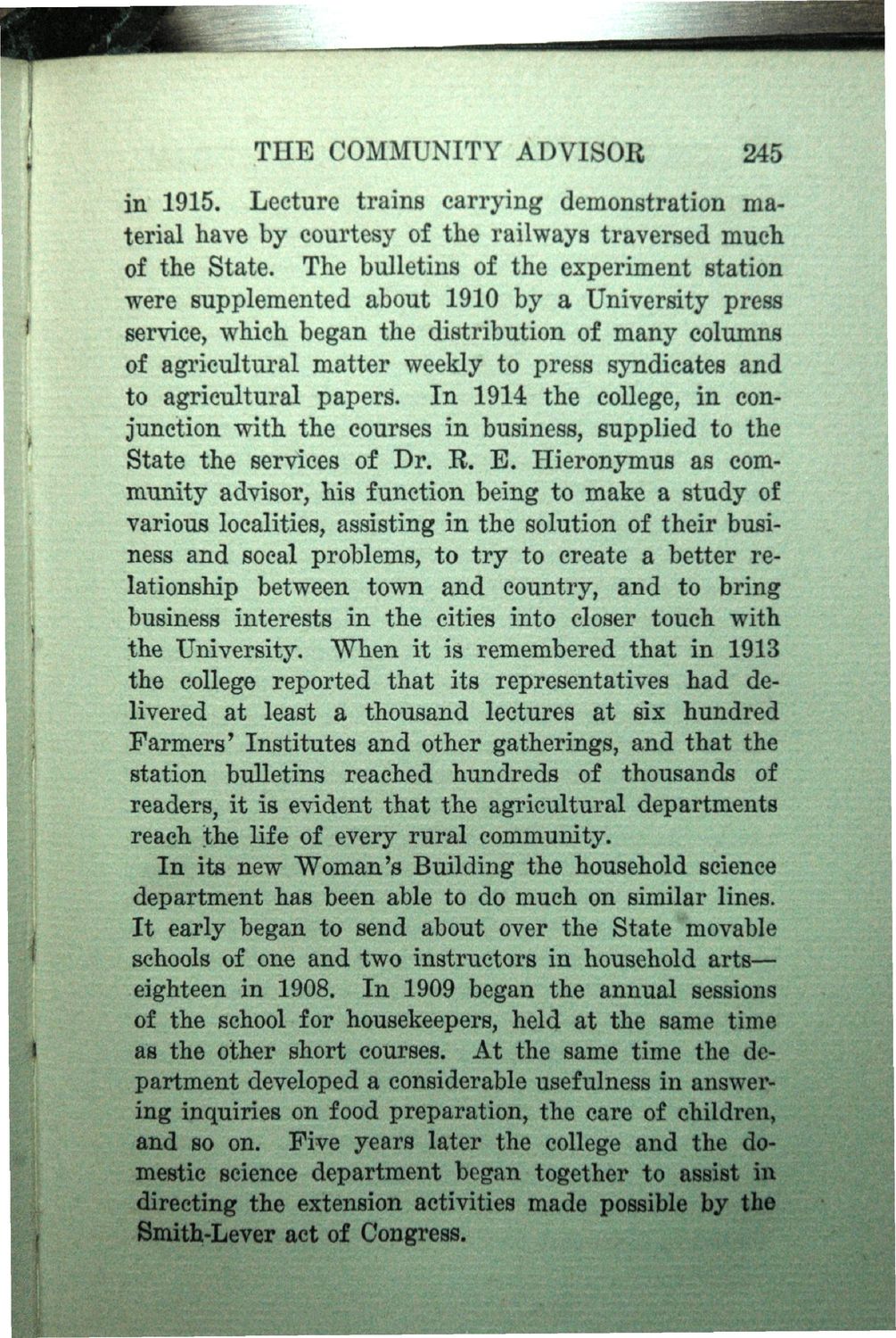| |
| |
Caption: Book - History of the University (Nevins)
This is a reduced-resolution page image for fast online browsing.

EXTRACTED TEXT FROM PAGE:
THE COMMUNITY ADVISOR 245 in 1915. Lecture trains carrying demonstration material have by courtesy of the railways traversed much of the State. The bulletins of the experiment station were supplemented about 1910 by a University press service, which began the distribution of many columns of agricultural matter weekly to press syndicates and to agricultural papers. In 1914 the college, in conjunction with the courses in business, supplied to the State the services of Dr. R. B. Hieronymus as community advisor, his function being to make a study of various localities, assisting in the solution of their business and socal problems, to try to create a better relationship between town and country, and to bring business interests in the cities into closer touch with the University. When it is remembered that in 1913 the college reported that its representatives had delivered at least a thousand lectures at six hundred Farmers' Institutes and other gatherings, and that the station bulletins reached hundreds of thousands of readers, it is evident that the agricultural departments reach the life of every rural community. In its new Woman's Building the household science department has been able to do much on similar lines. It early began to send about over the State "movable schools of one and two instructors in household arts— eighteen in 1908. In 1909 began the annual sessions of the school for housekeepers, held at the same time as the other short courses. At the same time the department developed a considerable usefulness in answering inquiries on food preparation, the care of children, and so on. Five years later the college and the domestic science department began together to assist in directing the extension activities made possible by the Smith-Lever act of Congress.
| |